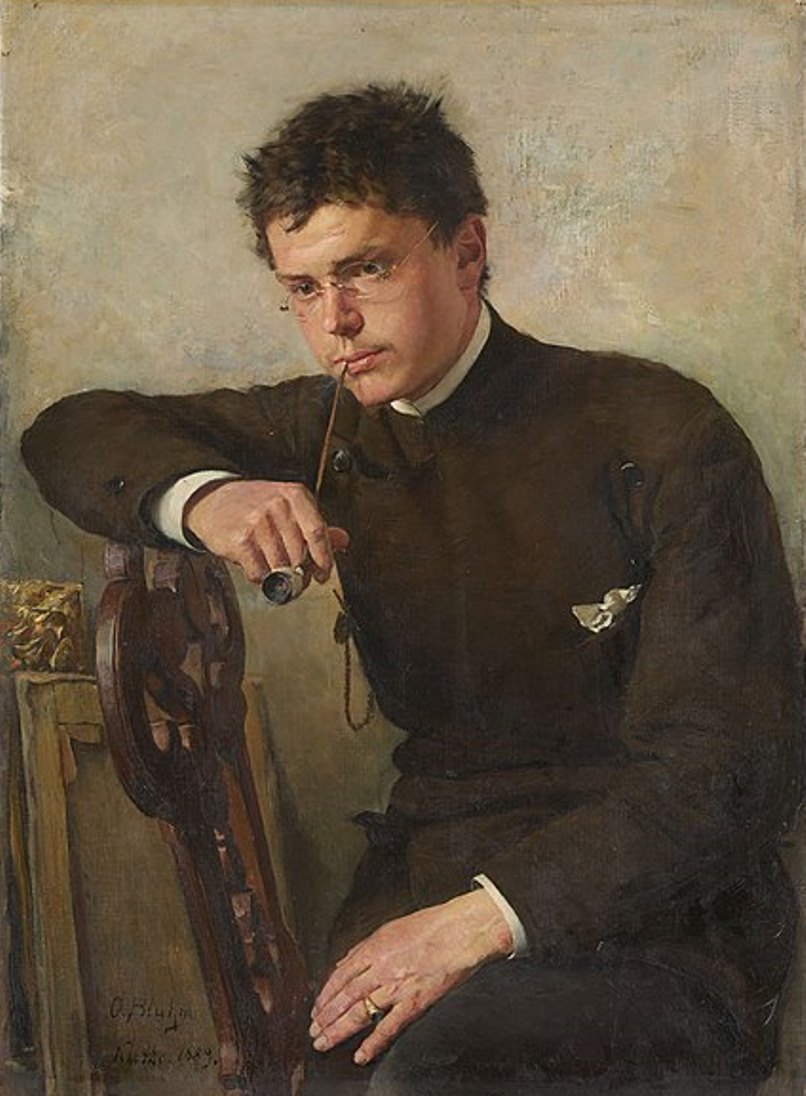
Painting of the 19th and 20th century — Kunsthandwerk, Antiquitäten und Gemälde

Andreas Achenbach was a German landscape and seascape painter in the Romantic style. He is considered to be one of the founders of the Düsseldorf School.[citation needed] His brother, Oswald, was also a well known landscape painter. Together, based on their initials, they were known as the "Alpha and Omega" of landscape painters.

Max Clarenbach was a German painter of the first half of the twentieth century. He is known as a painter, landscape painter, genre painter and teacher and is considered one of the most important representatives of Rhenish painting of his time.
Max Clarenbach made study trips to Italy and Holland early in his career, where he formed his genre preferences and became a landscape painter. His work reflected the influence of the Hague School and the French Barbizonians. The artist skillfully depicted winter scenes and the nature of western Germany. He also painted sports and street scenes.
Clarenbach was one of the organizers of the Düsseldorf Sonderbund and taught at the Düsseldorf Academy of Art.

Hermann Dischler was a German painter.
He studied at the Grand Ducal Art School in Karlsruhe and opened his own studio in Freiburg in 1896. In 1907 he built his "artist's house" in Hinterzarten, where he organized permanent art exhibitions.
As a basis for his works, Dischler used his own photographs, which he projected directly onto canvas and then painted landscapes. He was most successful with his snowy winter paintings. Due to their documentary nature, these works have historical value today.
Hermann Dischler was a board member of the Baden Free Artists Association. In 1917 he was awarded the title of professor and in 1926 he became an honorary member of the regional association Badische Heimat.

Hermann Dischler was a German painter.
He studied at the Grand Ducal Art School in Karlsruhe and opened his own studio in Freiburg in 1896. In 1907 he built his "artist's house" in Hinterzarten, where he organized permanent art exhibitions.
As a basis for his works, Dischler used his own photographs, which he projected directly onto canvas and then painted landscapes. He was most successful with his snowy winter paintings. Due to their documentary nature, these works have historical value today.
Hermann Dischler was a board member of the Baden Free Artists Association. In 1917 he was awarded the title of professor and in 1926 he became an honorary member of the regional association Badische Heimat.

Hermann Dischler was a German painter.
He studied at the Grand Ducal Art School in Karlsruhe and opened his own studio in Freiburg in 1896. In 1907 he built his "artist's house" in Hinterzarten, where he organized permanent art exhibitions.
As a basis for his works, Dischler used his own photographs, which he projected directly onto canvas and then painted landscapes. He was most successful with his snowy winter paintings. Due to their documentary nature, these works have historical value today.
Hermann Dischler was a board member of the Baden Free Artists Association. In 1917 he was awarded the title of professor and in 1926 he became an honorary member of the regional association Badische Heimat.

Hermann Dischler was a German painter.
He studied at the Grand Ducal Art School in Karlsruhe and opened his own studio in Freiburg in 1896. In 1907 he built his "artist's house" in Hinterzarten, where he organized permanent art exhibitions.
As a basis for his works, Dischler used his own photographs, which he projected directly onto canvas and then painted landscapes. He was most successful with his snowy winter paintings. Due to their documentary nature, these works have historical value today.
Hermann Dischler was a board member of the Baden Free Artists Association. In 1917 he was awarded the title of professor and in 1926 he became an honorary member of the regional association Badische Heimat.

Hermann Dischler was a German painter.
He studied at the Grand Ducal Art School in Karlsruhe and opened his own studio in Freiburg in 1896. In 1907 he built his "artist's house" in Hinterzarten, where he organized permanent art exhibitions.
As a basis for his works, Dischler used his own photographs, which he projected directly onto canvas and then painted landscapes. He was most successful with his snowy winter paintings. Due to their documentary nature, these works have historical value today.
Hermann Dischler was a board member of the Baden Free Artists Association. In 1917 he was awarded the title of professor and in 1926 he became an honorary member of the regional association Badische Heimat.



























































